#Georges-Eugene Haussmann
Explore tagged Tumblr posts
Text
[Fantastic Fest 2022] DEEP FEAR Unearths Hatred Barely Beneath the Surface
[Fantastic Fest 2022] DEEP FEAR Unearths Hatred Barely Beneath the Surface
Deep Fear (2022) Directed by Grégory Beghin Screenplay by Nicolas Tackian Starring Blaise Afonso, Olivier Bony, Léone François-Janssens, Sofia Lesaffre, Kassim Meesters, Victor Meutelet, Joseph Olivennes, & Philippe Résimont. Horror / Thriller ★★★1/2 (out of ★★★★★) DISCLAIMER: The following essay contains SPOILERS! Shield thine eyes, or be forever spoilt. Grégory Beghin’s Deep Fear is ever so…

View On WordPress
#1989#1991#Algeria#Bunker#Catacombs#Colonialism#Conscription#Georges-Eugene Haussmann#Hitler#Nazi Party#Neo-Nazis#No Smoking#Racism
1 note
·
View note
Text
I Saw Three Swans: Baudelaire, Rilke, Oswald
I Saw Three Swans: Baudelaire, Rilke, Oswald
A friend of mine recently asked what I thought of Alice Oswald’s poem, ‘Swan’ – in fact, what did I think it meant. It appears in her 2016 collection Falling Awake (Cape Poetry). I’m not sure I can give a direct answer to her direct question, but it linked up with two other swan poems I have read recently. Baudelaire’s poem appears in The Flowers of Evil and I have been re-reading a couple of…

View On WordPress
#Alice Oswald#Alma Classics#Andromache#Anthony Mortimer#Cape Poetry#Charles Baudelaire#David Raeburn#Falling Awake#Georges-Eugene Haussmann#modern Paris#New Poems#new translations of Rilke&039;s poems#Ovid&039;s Metamorphoses#Pushkin Press#Rainer Maria Rilke#swan poems#Ted Hughes#The Aeneid#The Book of Hours#The Flowers of Evil#Virgil
0 notes
Note
genuine question: what is hausmannization (from your tag anti hausmannization)?
it refers to georges-eugene haussmann, who renovated paris in the 1850s-1870s. essentially it was full scale gentrification by the state that also served to make it easier to break up any uprisings. the critique section of the wiki article is informative.
6 notes
·
View notes
Text
top ten things ive gotten drunk and ranted about to innocent bystanders
1. war and peace
2. riku kingdomhearts being severe anxiety+depression that cause u to lash out and do bad things representation
3. david bowie, multiple times
4. jacques brel (incl. calling david bowie a slur, coincidentally)
5. flu virus 2,3 linkages vs 2,6 linkages
6. georges-eugene haussmann (derogatory), multiple times
7. mother 3, anticapitalist masterpiece
8. junji ito and the comfort of the abjectly wrong
9. pacific overtures
10. delta p
6 notes
·
View notes
Photo

Looking at the statue of archangel Michael vanquishing the Devil, along with its fountain hiding the end of the building located on the corner of Boulevard Saint-Michel and Rue Saint-Andre des Arts. The fountain was designed by architect Gabriel Davioud and constructed from 1858 to 1860 as part of urban planner Georges-Eugene “Baron” Haussmann makeover of Paris. The fountain measures 85 feet by 50 feet, requiring the work of nine different sculptors: Henri Alfred Jacquemart crafted the two winged dragons on either side of the fountain; Francisque Duret sculpted the central figure of Saint Michael; Felix Saupin designed the rock under the statue of Saint Michael. The bas-reliefs and ornamental foliage were designedby Noemie Constant; and smaller statues representing the cardinal virtues were sculpted by Jean-Auguste Barre, Claude-Jean Guillaume, Louis-Valentin Robert, Charles-Alphonse Gumery, and August-Hyacinthe Debay. . . . #Paris #saintmichel #fontainesaintmichel #parisphoto #parisjetaime #parislife #parisart #parismonamour #parismaville #parisgram #parislove #pariscity #villedeParis #Iloveparis #parisfind (at Fontaine Saint-Michel de Paris) https://www.instagram.com/p/CG8PySfBjrh/?igshid=nolck9owx2l6
#paris#saintmichel#fontainesaintmichel#parisphoto#parisjetaime#parislife#parisart#parismonamour#parismaville#parisgram#parislove#pariscity#villedeparis#iloveparis#parisfind
9 notes
·
View notes
Text
A Place for the People
// Entry 4 - Place de la Republique
It is difficult to imagine Paris as anything other than the beautiful city it is today where every street boasts open views, intricate architecture, and appears to be designed purely with aesthetics in mind. However, Paris was not always such a beautiful city.

At the beginning of Napoleon III’s rule as emperor, the city of Paris was populated by dark, narrow streets. The center of the city especially was known as a dangerous and unclean place teaming with disease. Wanting to rid the city of these connotations, Napoleon III hired on Georges Eugene Haussmann to launch his reconstruction of Paris. Napoleon III wanted the design of the city to reflect the idea that Paris was the new center of power. To accomplish this, Haussman began clearing space in front of monuments, adding grand boulevards, and building new parks and squares. These newly widened streets, now conveniently too wide for the French revolutionaries to barricade easily, opened the atmosphere of the city while also providing avenues for France’s troops. Place de la Republique, built in 1854, is one of the locations that resulted from this renovation.

Directly outside the Republique metro stop, Place de la Republique lies at the intersection of the 3rd, 10th, and 11th arrondissement. In its center stands a 75 ft. statue of Marianne. Her figure, first seen in Delacroix’s Liberty Leading the People, personifies liberty and reason, and is often used to signify the French Republic. On her head is the phrygian cap which signifies freedom. Her left hand rests on a tablet inscribed with Droits de L’homme (the Declaration of the Rights of Man and the Citizen) while in her right hand she hold aloft an olive branch. Around her are three figures personifying the French motto: Liberté, égalité, fraternité. At the front of the base stands a lion stepping forward to protect a ballot box. If you walk to the left of the lion around the base you will find many small relief sculptures depicting important events for the Republic from its conception to the first national celebration in 1880.

This structure was built in 1879 after city authorities hosted a contest for the design of a monument to celebrate the establishment of the new Republic. Leonard and Charles Morice won, with Leonard designing the center sculpture and Charles constructing the base.

Place de la Republique was built to celebrate the freedom and power of the individuals of the Republic and still remains as a symbol of the people’s power today. It is a common location for the frequent protests that characterize Parisian culture as they continue to demonstrate the power of the individual. It has become a rallying point which can bring people together both in defiance and in remembrance.

[Photo from Times Live]
After the terrorist attacks in January of 2015 at Charlie Hebdo, it was at Place de la Republique that the people built their memorial. Candles covered the ground and letters, poetry, and art made to remember the people lost engulfed the rest of the monument. Just as they gathered to demand that their voices be heard in protest, so did they join their voices again to cry out against the injustice their city had suffered.

[Photo from Yahoo News]
Place de la Republique square remains a beacon that unifies. A symbol of what many individual voices can accomplish together. Truly a place for the people.
Sources: Michelin Green guide, Professor Janes
1 note
·
View note
Text
Definition der Elemente dieses ikonischen Stils
Definition der Elemente dieses ikonischen Stils
Wenn Sie die Stadt Paris besucht haben, haben Sie die Haussmann-Architektur aus erster Hand gesehen. Der Stadtplaner des 19. Jahrhunderts, Georges-Eugene Haussmann, definierte den Stil, der das Aussehen der modernen Stadt Paris prägte. In Galerie ansehen Obwohl seine Arbeit für das Aussehen der Stadt grundlegend ist, war es kein organischer Prozess. Stattdessen musste die großflächige Zerstörung…
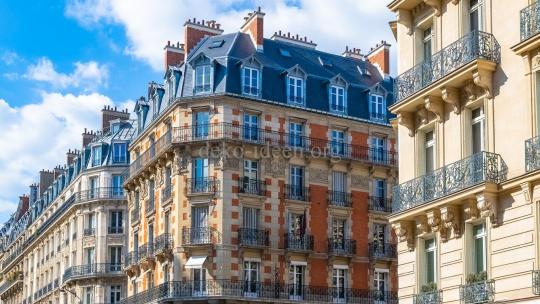
View On WordPress
0 notes
Text

I never thought I’d like Paris. Always thought Paris was so cliche due to all the girls everywhere wanting to go either for romance or just because of they’re in love with the Eiffel Tower. In my bucket list, Paris was a no show, though if there existed the opportunity of visiting of course I’d say yes.
Once booked for Paris, I started to do some research on it. Discovered that there was a lot to Paris more than just the Eiffel Tower. Lot of places to visit and learn so much history of France. Also it looked like a beautiful city. Over research and photos, the Parisian architecture caught my eye. Most of them were lightly colored with grey blueish roofs. I was kind of digging them. Later I learned this was part of city renovation proposed by Napoleon III brought to live by Georges-Eugen Haussmann. Goal was to bring light and beauty to the city of Paris. I believe mission was accomplished.
As we arrived to Paris and made our way to the city center this buildings started to pop up. I just loved them. Every picture you see from anyone and see you see these buildings, you know it is Paris. No other place. That’s part of what I love of them. Uniqueness.
This photo makes honor of the thing I love from Paris the most, it’s streets and buildings. Making me say that Paris is too in my favorite places around the world...
1 note
·
View note
Text
Entry 2: On Pere Lachaise Cemetery
For my second blog assignment, I decided to embark on the metro and visit Pere Lachaise Cemetery on a rainy Sunday morning. Pere Lachaise is the largest cemetery in Paris, and is one of the largest green spaces in the city. It covers 43 hectares, features over 70,000 burial plots, including many famous people and historical figures, and contains several monuments. The cemetery was opened in 1804 to replace unsanitary parish conditions, and to give more burial spaces.
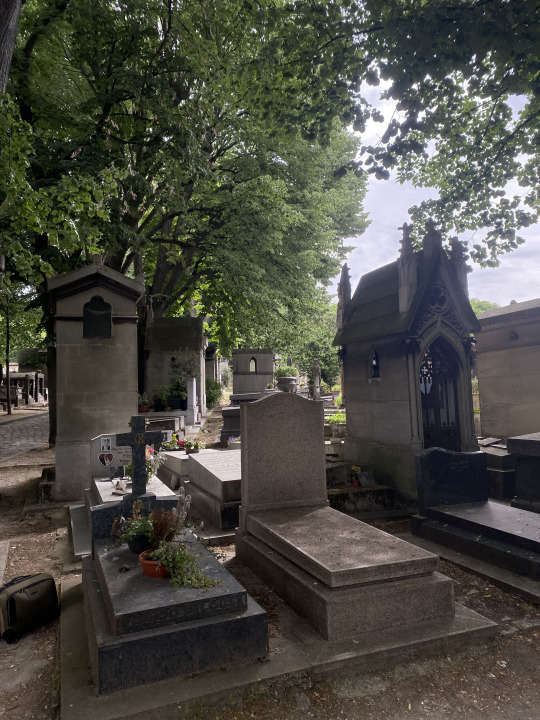

Upon walking into Pere Lachaise, I was immediately struck by how different it felt compared to a cemetery that you could find in the United States. In Pere Lachaise, the cemetery was designed much more as a park, with lots of different sidewalks and places to sit and enjoy the established trees and nature around you, compared to several American cemeteries that I have been to which feel more like a field with graves in them. Another difference was that the graves in Pere Lachaise had a very different look to them compared to American cemeteries, because they were much larger and more ornate. Also, the Parisian graves towered above the ground, and whole families were often buried together. One more difference was that the graves in Pere Lachaise felt more compacted together, versus how they are spread out more in the United States. I also found the memorials in the cemetery to be incredibly beautiful, such as the Monument to the Dead, and the memorials for all the different veterans. This was a great way to show respect for those groups. The chapel and crematorium were also interesting to see, as so many different historical figures and people from all walks of life have passed through there.
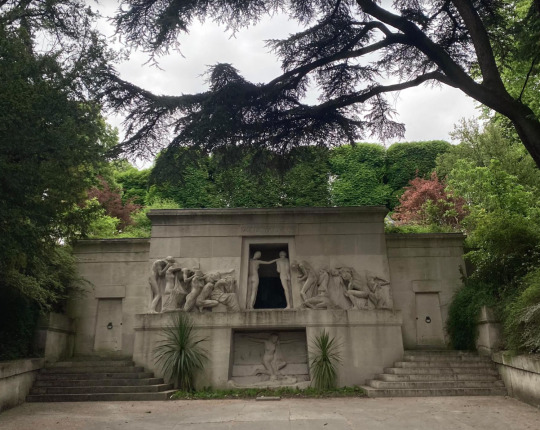
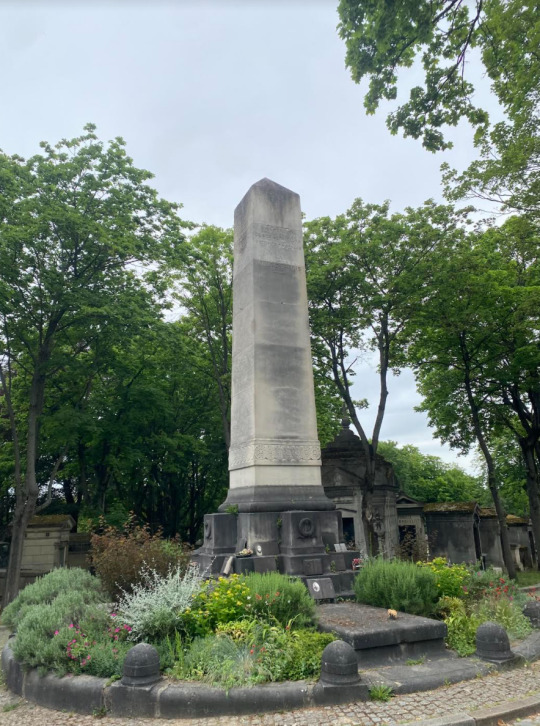
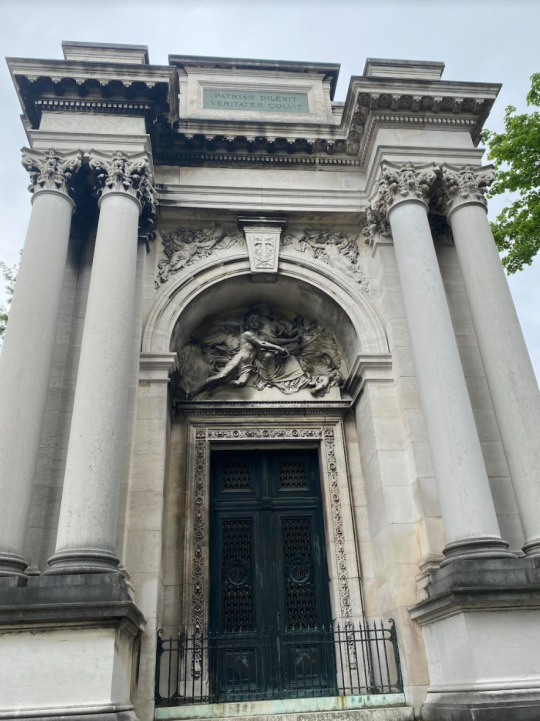
For the most part, I really enjoyed exploring the cemetery. At the beginning of my trip, I felt a little stressed and uneasy, as the expansive cemetery was very difficult to navigate, and it felt a little creepy to me. Also, it felt very strange to me that the resting place of so many people was being treated more like a tourist attraction. However, after a little trial and error (and a lot of studying the map), I was able to figure out the winding pathways and different districts of the cemetery better, and I began to feel a little more comfortable and was able to appreciate the beauty and history more. It was so cool to see all the different types of tombs / graves and how they were unique to each family or person that was buried there, and if they featured different religious depictions or not. For example, Oscar Wilde’s grave contained a book. Another thing that I found super interesting was seeing graves from the early 1800s right next to graves from the 21st century, which really goes to show the deep history of the city of Paris. It was also so cool to see different historical figures buried next to more unknown families as well.
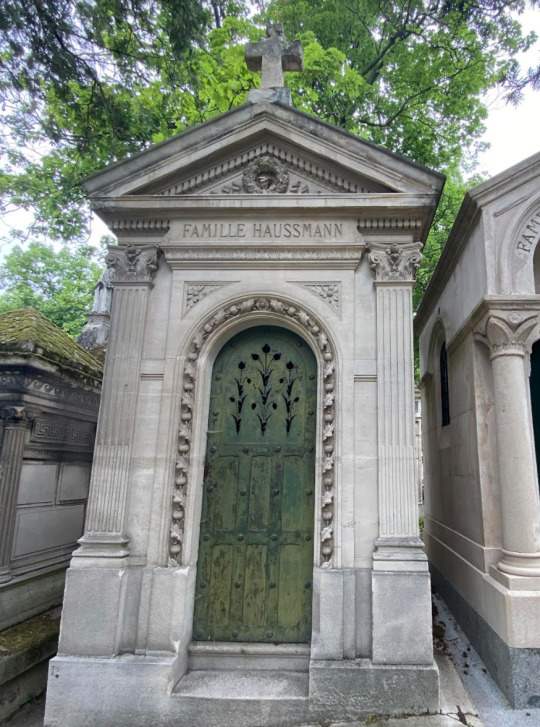
One of the graves that I was most excited to see in my time at Pere Lachaise was the grave of Georges-Eugene Haussmann. Haussmann is responsible for the redesign of Paris. He made the city what it is today by bulldozing large parts of the original city and transforming it to have more wide tree-lined streets, axial perspective, and more modern "Haussmann style" apartments. I was so excited to see his family's because after experiencing the beauty of Paris and learning so much about him in class, I wanted to visit the memorial of the person responsible for much of that. Compared to surrounding graves, I found the Haussmann grave to feel a little more understated, which surprised me for such an important figure, but it was beautiful nonetheless.
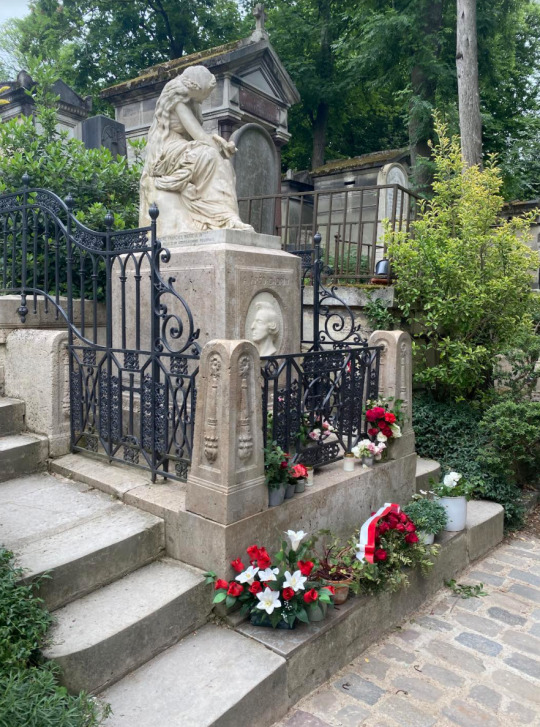

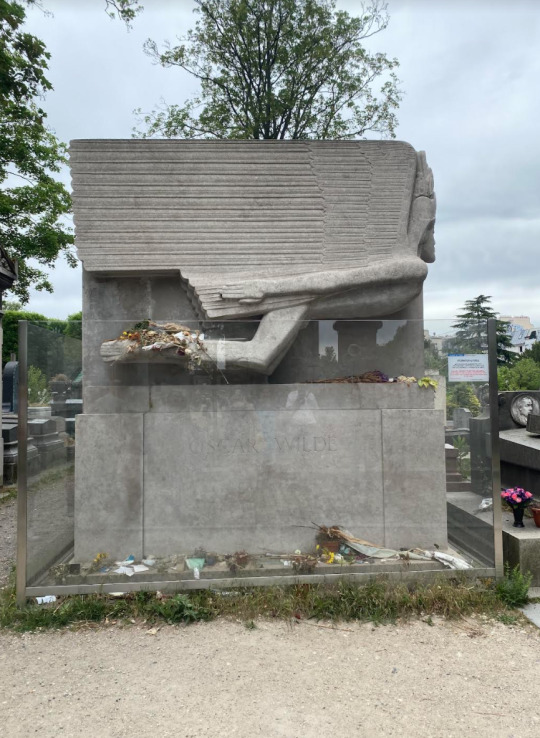
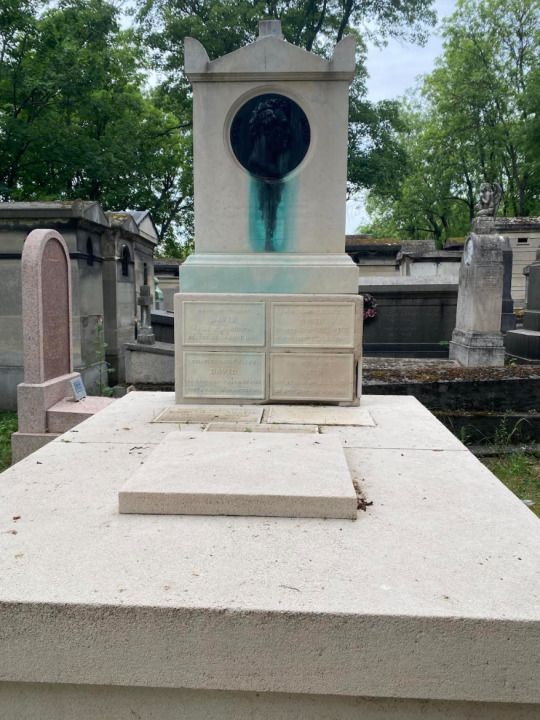
Some more historical graves that was able to visit include Chopin. David, Oscar Wilde, Balzac, and Jim Morrison. I loved being able to honor their memory in this gorgeous historical cemetary!
Sources:
Paris City Guide
0 notes
Text
Thurday Doors Grands Boulevards
Thurday Doors Grands Boulevards
Baron Georges-Eugene Haussmann cleared the slums of central Paris to lay out a grand design of long wide avenues in the mid 19th Century. Napoleon III had returned from exile in London in 1848 and was disgusted by the filthy, overcrowded centre of Paris. So he appointed the Baron to renovate the city, with modern sewerage (les egouts), clean air and plenty of light. The plans incorporated new…

View On WordPress
0 notes
Text
Paris + Chicago


There comes a time in a city’s life when it’s physical constrains can no longer accommodate its population, specially during a time of rapid exponential growth. Major cities throughout the world went through such growing pains such a lack of proper sanitation, disorganized street grids, lack of proper green spaces, and bad housing conditions for those in lower social standings. Paris and Chicago were two cities that were able to deal with these issues thanks to large scale planning projects by George Eugene Haussmann and Daniel Burnham. Listed here are some of the key strategies they used to resolve these issues in their cities.

1. Re-structuring of streets
Haussmann re-structured the streets of Paris by proposing the widening of streets removal of a number of alleyways, and construction of boulevards. The widening of streets and construction of boulevards improved the circulation throughout the city, while the removal of alleyways helped deal with the city’s sanitation issue.

2. Creation of green spaces and squares
Burnham proposed for Chicago a major overhaul of the city’s lake front and the creation of an interconnected series of parks throughout the city. This series of green spaces became known as the “Emerald Necklace”. This helped improve the air quality of the city, and encouraged the population to engaged with the walk-able public spaces. In Paris, to help with the scale of the new boulevards, new public squares were constructed. Similar to what was later done in Chicago, this was meant to encourage pedestrian engagement with the streets.

3. Transportation
Transportation was a key point in the plans to restructure both Paris and Chicago. The restructuring of the streets in Paris improved the access to the train stations, which helped in the larger propagation of the railway system throughout France. In Chicago, Burnham improved the rail stations and railways within the city as well.
These are just some of the strategies that Haussmann and Burnham deployed in their respective cities, and they should be taken as examples of what can be done to resolve similar issues within our modern cities.
CREDITS:
Written by: Gustavo Alejandro
Photos and Citations: Cindy Nguyen + Joseph Dawson Davis
SOURCES:
Chicago Street. (2012, November 06). Retrieved September 05, 2020, from https://videohive.net/item/chicago-street-/3339850
Devin. (2019, June 03). Famous Monuments in Paris to Visit. Retrieved September 05, 2020, from https://medium.com/@mishrapd00/famous-monuments-in-paris-to-visit-7c7b34f3aa28
O'Sullivan, F. (2016, April 01). Paris's Famous Public Squares Will Get a Pedestrian-Friendly Makeover. Retrieved September 05, 2020, from https://www.bloomberg.com/news/articles/2016-04-01/paris-s-famous-public-squares-will-get-a-pedestrian-friendly-makeover
Pierre. (2019, December 02). Top 10 Most Famous Monuments of Paris. Retrieved September 05, 2020, from https://frenchmoments.eu/top-10-most-famous-monuments-of-paris/
Rethinking the Chicago Emerald Necklace. (n.d.). Retrieved September 05, 2020, from https://pruned.blogspot.com/2011/01/rethinking-chicago-emerald-necklace.html
0 notes
Photo

Tại vùng trung tâm thủ đô Paris-Pháp, giá nhà bình quân vào khoảng 14.430 Euro/m2. Điều này có nghĩa là giá một căn hộ chỉ rộng hơn 35 m2 sẽ được bán với giá hơn 500.000 USD.
Dẫu vậy, đây chỉ là một phần nguyên nhân khiến Paris trở thành một trong những thành phố đắt đỏ nhất trên thế giới và câu chuyện của nó chứa rất nhiều bí ẩn đằng sau.
Chống bạo động
Vào thế kỷ 19, thủ đô Paris khá bất ổn khi liên tục có những biến động địa chính trị. Người dân vào thời đó thường xuyên có những cuộc biểu tình, chặn đường phố vốn đã chật hẹp bằng bàn ghế đế chống lại quân đội kỵ binh hoặc cảnh sát. Chiến lược này khiến chính phủ Pháp khá đau đầu bởi không dễ dẹp bỏ các cuộc bạo động trên đường phố.
Đến thời Napoleon đệ tam (1808-1873), các cuộc bạo động tiếp tục diễn ra khi nhà lãnh đạo này chuyển chế độ từ tổng thống sang hoàng đế. Nhằm chống lại các cuộc bạo động tại Paris, Napoleon III đã yêu cầu kiến trúc sư Georges Eugene Haussmann thiết kế lại khu vực nội đô.

Kể từ đây, kiến trúc sư Haussmann đã lãnh đạo một trong những công cuộc chuyển đổi công trình đầy tham vọng nhất trong lịch sử hiện đại, qua đó biến Paris từ một thành phố lộn xộn trở nên huy hoàng tráng lệ như ngày nay.
Trong tiến trình này, Haussmann đã cho phá dỡ gần 20.000 tòa nhà cũ và xây mới hơn 30.000 công trình với độ đồng đều cao. Tất cả những tòa nhà mới đều có đặc điểm là làm bằng đá, mái vòm sắt, thiết kế ban công đồng bộ và cao không quá 6 tầng.
Chính sự thay đổi này đã đẩy hàng loạt người nghèo tại Paris ra vùng ngoại thành, xóa sổ các khu ổ chuột và cố định hình ảnh nội đô cho đến tận ngày nay.
Chính quyền Paris khá hài lòng với thiết kế của Haussmann và cố gắng không thay đổi khu vực được cải tạo của ông tại Paris. Đây là lý do chính vùng trung tâm Paris chẳng có mấy nhà cao tầng như những thành phố đắt đỏ khác mà chúng ta thường thấy ở London, New York, Tokyo…
Đất chật người đông
Trong khoảng 2000-2014, thủ đô Paris chỉ mở rộng có 1,3% không gian ở, thấp hơn nhiều so với mức bình quân 4,3% trên toàn thế giới. Việc cố định kiến trúc và ngăn sự phát triển của các tòa nhà cao tầng đã giới hạn không gian sinh hoạt, làm việc của người dân bất chấp quá trình đô thị hóa khiến ngày càng nhiều người đổ về Paris.
Xin được nhắc lại rằng Paris có quy định ngặt nghèo về độ dài cũng như chiều cao của các tòa nhà được xây dựng trong trung tâm. Việc phá bỏ, sữa chữa về thiết kế các tòa nhà cũng được kiểm soát gắt gao nhằm giữ hình ảnh cho nội đô. Hệ quả là giá nhà ngày càng đắt đỏ còn người dân chẳng đủ chỗ sống.

Giá thuê một căn hộ 2 phòng ngủ tại các thành phố trên thế giới (USD/tháng)
Năm 2018, khoảng 61% số người mua nhà có giá trên 4 triệu Euro tại Paris không phải người địa phương, qua đó cho thấy mức độ đông đúc và đắt đỏ của thành phố này.
Trong khoảng 2009-2019, giá bất động sản bình quân theo m2 tại Paris đã tăng 64%. Dù chính phủ Pháp đã thông qua quy định mới nới lỏng về chiều cao và độ dài của các căn hộ nhưng nhiều chuyên gia cho rằng sẽ phải mất vài năm để thị trường bất động sản Paris có thể thay đổi theo.
Lắm người giàu
Thủ đô Paris là một trong những nơi có nhiều người giàu sinh sống nhất trên thế giới. Tính đến năm 2018, khoảng 3.955 đại giá có tài sản trên 30 triệu USD đang sinh sống ở thành phố này. Việc người giàu đổ về Paris sinh sống đã kích thích giá các căn hộ cũng như nhiều dịch vụ tại đây.
Giá nhà hạng sang tại Paris đã liên tiếp tăng 12% năm 2017 và 5,3% năm 2018. Trong khi đó giá nhiều loại mặt hàng ở Paris cũng tăng mạnh. Ví dụ như giá quần áo bình quân trong 6 tháng cuối năm 2019 đã tăng 14%. Hàng loạt những thương hiệu thời trang nổi tiếng liên tục mở thêm chi nhánh tại Paris đã đẩy giá cả tại đây tăng mạnh.

Số người giàu sống tại các thành phố trên thế giới
Bên cạnh đó, việc khách du lịch đổ dồn về đây cũng khiến nhiều cửa hàng bán lẻ hàng xa xỉ sống sót bất chấp sự bùng nổ của thương mại điện tử. Ví dụ như chuỗi bán lẻ hàng xa xỉ lớn nhất Châu Âu là Les Galeries Lafayette đã mở một trung tâm thương mại 2.800 m2 ở Paris chỉ để bán hàng cho du khách Trung Quốc. Họ thiết kế trung tâm để có thể chứa được các đoàn khách du lịch cỡ lớn và trang trí dát vàng theo quan niệm thẩm mỹ của người Trung Quốc.
Không riêng gì ngành hàng xa xỉ, mảng bán lẻ truyền thống tại Paris cũng làm nên ăn ra trong khi tại nhiều thành phố khác như New York, số lượng cửa hàng bán lẻ phải đóng cửa đã tăng 100% trong 10 năm qua.
Nhu cầu về không gian bán lẻ tại Paris mạnh đến mức giá thuê địa điểm bán hàng tại đại lộ Champs Elysees trong khoảng 2008-2018 đã tăng từ 10.000 Euro/m2 lên 20.000 Euro/m2.

Giá thuê mặt bằng tại đại lộ Champs Elysees
Lương thấp
Mặc dù giá cả đắt đỏ đến vậy như mức lương bình quân của người dân Paris lại khá thấp. Theo CNBC, Paris đắt thứ 5 thế giới trong bảng xếp hạng giá thuê một căn hộ 2 phòng ngủ, thế nhưng người dân nơi đây lại chỉ đứng thứ 22 về mức thu nhập bình quân hàng tháng. Chính điều này khiến Paris càng trở nên đắt đỏ trong mắt người dân cũng như kích động nhiều xung đột.

Lương tháng bình quân của người Paris so với các nước khác
Đã hơn 300 năm kể từ khi Paris được coi là một trong những thành phố đắt đỏ nhất thế giới và với tình hình như hiện nay, nhiều khả năng thủ đô của Pháp sẽ còn giữ danh hiệu này lâu hơn nữa.
Nguồn CafeF
0 notes
Text
gonna start a conspiracy theory that georges-eugene haussmann was turning paris into a transmutation circle
3 notes
·
View notes
Text
19th Century Urbanism
Latin America during the 19th Century, was looking for a chance to rebuild themselves after a long period of revolution and social unrest. Most Latin American countries at this time, such as Mexico and Argentina, had successfully won their independence from Spain. In order to completely cut ties with their former oppressors, Latin America discarded the traditional Colonial Styles and looked towards France and Italy for inspiration. Baron Haussmann, a french official, directed and implemented the urban design of Paris’ renovation.

Baron Georges-Eugène Haussmann. (Image sourced from Britannica)
His urban renewal strategies involved cutting “wide, straight, tree-lined avenues through the chaotic mass of small streets” (“Georges-Eugène, Baron Haussmann”, Britannica, 2020). His strategies were extremely influential and practically “dominated the growth of Latin American capitals in the 19th century” (“Latin America Architecture”, Britannica, 2019). Following his methods, countries in Latin America created new buildings “using the Neoclassical model” and cities that adhered to “the French model of the tree-lined boulevard” (“Latin America Architecture”, Britannica, 2019). The urban renewal of Latin America modernized the social structures in countries and created cities such as Mexico City and Buenos Aires.

19th Century Mexico City. (Image sourced from google images)
Mexico City is one of the largest metropolises in Latin America today. As mentioned before, the city had modernized itself under the influence of French urban renewal. Historical locations that were once Colonial were revamped and preserved to record its historical ties to the city. Chapultepec Park is one such example.

Map depicting the size and sections of Chapultepec Park. (Image sourced from wikipedia).
As the oldest and largest urban park in Latin America, it holds a deeply rooted history with the Spaniards. It was once an aqueduct created by the Aztecs but was later conquered by Hernan Cortes. Famous historical individuals such as “Nezahualcóyotl, Moctezuma, Hernán Cortés, Maximiliano, Porfirio Díaz, and Lázaro Cárdenas” (“Chapultepec Park”, WMF) are all directly associated with this park.

Old aqua duct of Chapultepec Park (Image sourced from wikipedia).
Another example is Colonia Roma. During the colonial period, Colonia Roma was once a district in the Cuauhtémoc borough of Mexico City that was owned by Hernan Cortes. However in the late 19th and early 20th centuries, Colonia Roma turned into a modern town for the wealthy seeking to escape the deterioration of the city.

Painting depicting a portion of Colonia Roma. (Image sourced from wikipedia)
The preservation of these particular sites remains as a testament of the dark past that Mexico once faced. In the later years of the century, Mexico City had engaged in large scale economic, political, and social movements. This resulted in a flourishment of transportation and industrialization. The creation of the railroads “heralded the arrival of the Industrial Revolution” (“Mexico City”, Britannica), hundreds of factories opened up, and thousands of foreign labourers arrived in the country. The city improved tremendously through its sewage and drainage system and eventually introduced gas and electric lighting to its streets. Mexico City had also attracted “significantly greater levels of foreign investment, especially from Great Britain and the United States” (“Mexico City”, Britannica).
Like Mexico City, Buenos Aires in Argentina had also undergone significant modernization. The pressure to organize the city through urban design and planning was extremely intense. While most of the funding came from British investors, the “infrastructure to improve water sanitation, transportation, and port operations” (Cardinal-Pett, p.357) would follow the same urban planning as Paris. The Beaux Arts served as a powerful influence in Buenos Aires’s overall transformation. What was once a Spanish colonial port, became the capital of the Argentine Republic. Buenos Aires from then on, had set out to “reinvent itself as yet another Paris” (Cardinal-Pett, p.357).

19th century Buenos Aires. (Image sourced from google images).
This is also seen in the urban planning of its city blocks and avenue. Baron Haussmann's model of “straight, tree-lined avenues through the chaotic mass of small streets of which Paris” was taken and utilized in the organization of Buenos Aires, resulting in the connection of train terminals, traffic lights, monumental avenues, etc. By imitating Haussmans urban planning strategies, resulted in “rapid and easy movement across the city” (“Georges-Eugène, Baron Haussmann”, Britannica, 2020).

Transitions of Buenos Aires’ urban planning. (Image sourced from textbook).
Some examples of important landmarks in Buenos Aires, include the Plaza de Mayo and the three diagonal avenues: Avenida Presidente Roque Sáenz Peña, Ave de Mayo, and Avenida Presidente Julio A. Roca. Historically, these are locations that were brought up in the late 19th century as a result of the city expansion. Avenida de Mayo is a long horizontal road that runs from east to west, connecting the city core; Plaza de Mayo to Plaza del Congreso. The three diagonal avenues mentioned earlier, were constructed later in the early 20th century, which imitates Baron Haussman’s tree model. Plaza de Mayo is Buenos Aires’ city square that was named after the revolution, resulting in Argentina's independence.

The horizontal artery highlighted in red is the Avenida de Mayo connecting the Plaza de Mayo (right box) to Plaza del Congreso (left box). The two arrows indicate the Avenida Presidente Roque Sáenz Peña (top arrow), Ave de Mayo, and Avenida Presidente Julio A. Roca (bottom arrow). (Image sourced from textbook).
Overall, the commendable efforts in urbanism and city changes in Latin America, was thanks to many architects and engineers. However, what prompted these transformations was the desire for true independence. Historically speaking, Latin America had been under oppression and siege from a great deal of foreign powers. Were it not for the nationalistic cravings and aspirations to be a continent of true independence and individualism, cities such as Buenos Aires and Mexico would not have flourished to what we now know it to be today.
Bibliography:
https://www.britannica.com/biography/Georges-Eugene-Baron-Haussmann
https://www.britannica.com/art/Latin-American-architecture/Postindependence-c-1810-the-present
https://en.wikipedia.org/wiki/Paseo_de_la_Reforma#History
https://www.wmf.org/project/chapultepec-park
https://en.wikipedia.org/wiki/Colonia_Roma#History
https://en.wikipedia.org/wiki/9_de_Julio_Avenue#History_and_overview
https://en.wikipedia.org/wiki/Congressional_Plaza
Cardinal-Pett, Clare. A History of Architecture and Urbanism in the Americas. New York, NY: Routledge, 2016.
0 notes
Text
19th Century Urbanism in the Americas
In the later part of the 19th century, the Americas, from New York City to Buenos Aires, transformed itself through a mix of styles or eclecticism as a response to classicism. This meant the rejection of colonial influences through inspiration from other architectural and ideological styles from other places around the world, for example, Paris. During this time, the overall changes reflected in the urbanism of these cities, migration from Europe to the Americas and north to the south brought wealth to these cities but also the expansion of these cities turning them into metropolises. This called for major interventions in the cities’ fabric to bring some order to the chaos or to modernize itself.

As a result of instant expansion, and faster than in Europe, North American cities, such as Chicago or New York, became Metropolises. In the late 19th century, New York and Chicago grew to the size and complexity of that of Paris and London. As a result of the overcrowding and unplanned urban fabric, these cities saw an increase in diseases, crime was an overall dangerous environment to live and work in. To mitigate this issue the United States decided to make changes through surgical interventions in the urban fabric. The urban planners in the United States were heavily influenced by the Paris urban renovation project designed and spearheaded by planner Georges-Eugene Haussmann who was commissioned by Napolean III. Haussmann carried out dramatic urban changes to Paris, this included “the demolition and rebuilding of large sections of the city using technocratic criteria of transportation on: broad boulevard, efficient sewage, renewed water supply, and grand public parks.” The plan required the demolition of structures in the way of renovation, required owners to clean and maintain the facades of their buildings, modernization of sewage system, building height regulation and widening od boulevards. Haussmann aimed to clean up the city both physically and socially because of how the physical attributes of the city as a result of overcrowding made it a dangerous place to live due to crime and disease. In the urban planning of Manhattan City i.e., the 1811 Commissioner’s Plan, the architects constantly took inspiration from Europe, especially the Paris renovation project but used technological advancements to build tall buildings. The influence of European urban planning in New York can be seen in the form of the broad and straight boulevards like the 12th north-south avenues, the central park and other parks dotted in the city grid, the sewage system, the homogeneity in building style in some areas, eg, Villard Houses on Madison Avenue and the grid of public transport.

The urban renovation in Chicago came about after the fire in 1871. The Chicago school of architecture emerged with the onset of the renovation of the city. The architects worked around the constraints of higher land prices by building skyscrapers, the fire prompted them to design buildings with fire safety in mind. They also focused on materiality, they used steel structures with curtain walls in place of masonry. In 1893, the World’s Columbian Exposition took place in Chicago, it was an expo where architects and designers from the around the world showcased their work, Daniel Burnham and Fredrick Olmstead showcased their work, completely conceived in Beaux-Arts style at the exposition. This triggered the influence of Beaux-Arts style in American urbanism through he City Beautiful movement leading to Daniel Burnham and Fredrick Olmstead being appointed to work on the Senate Park Commission Plan for Washington D.C. or the MacMillan Plan in 1902. The beaux-arts style relied heavily on ornamental and sculptural elements, and classic Greek and Roman forms this can be seen in the National Mall and in the design style of the main buildings in the area like the Capitol Building.



Like the cities in the United States, Latin American cities like Mexico City and Buenos Aires transformed themselves in response to the increase in wealth and population, based on the Paris Model. As an act of rejection of the colonial influences on the cities, Latin American architecture and city planning looked for inspiration in Paris. Buildings such as the Legislative Palace and Fine Arts Palace in Mexico City draw heavy influence from buildings like the Grand Palais and the Petit Palais in Paris. The similarity in ornamentation and materiality can be seen in these buildings. The parks in Mexico City like in Reformation Avenue, also show how the Paris model played an inspiration in the current makeup of the city. Similarly, Buenos Aires also drew heavy inspiration from the Paris model, it is evident in the map of the city, where, once there was one long single important boulevard, now there are multiple wide streets with diagonal wide streets cutting through the grid. There is a clear hierarchy between main streets and non-main streets in the urban core. The streets are lined with trees and the city fabric has many pockets of parks, similar to that of Paris. This way these cities fashioned themselves as the “Parises of the New World.
0 notes
Photo



Blog Post #3: 19th Century Urbanism
During the mid 19th century, Paris underwent vast urban renewal. Prior to the renovation, Paris lacked mobility and modernity. The streets were very narrow, there was no infrastructure, no sewage system, and the neighborhoods were overcrowded and did not meet the standard conditions for healthy living at the time. Louis-Napoleon III recognized that Paris needed to be upgraded. Napoleon appointed Georges-Eugene Haussmann to demolish the poor existing areas. Performing a renovation that drastic was very difficult to accomplish and had never been done before. Unfortunately, during this process, original inhabitants of Paris were expelled which caused gentrification. Eventually, Paris began to transform and new elements to the city were added. For example, boulevards were widened and buildings were proportioned according the new size of the streets, the streets were lined with trees, and medians were added. This renovation came to be one of the most ambitious construction projects that ever occurred in the western world.
In the western hemisphere was progressing at a very fast rate which resulted in the Americas wanting to do the same. Since the Americas were “newer” and did not have as much history compared to the western world, there weren’t many setbacks so urban renewal happened rapidly. New York City and Chicago are prime examples of this occurrence.
In the mid 19th century, the beaux-arts style became very popular in the United States. It incorporated a mix of baroque, neoclassical, gothic, and renaissance styles. At the time of beaux-art’s popularity in the U.S., it seemed to be a step backwards for architecture. However, it revived outdated architectural styles and provided insight on different landscape and urban design methods that had never been seen in this part of the world. Many cities in the northeast and mid-Atlantic region were influenced by this movement. Those places include New York City, Chicago, Washington D.C., Baltimore, and Boston. D.C. in particular exemplified this influence through the Senate Commission Plan. In the late 19th Century, the National Mall did not have a clear urban design. The Senate Commission Plan established a clearer plan for the city which meant having to transform the original plan that was created by Charles L’enfant and John Ellicott. Elements that were introduced as a result of this movement were park systems, European influence, and the shaping of one common mission.
Mexico City and Buenos Aires reinvented themselves as well Mexico City adopted the idea of diagonal streets that are often seen in Paris’s urban plan. Buenos Aries has similar elements that reflect progression. An aerial view of the city clearly depicts the two main intersecting avenues and smaller streets that developed after. The city’s growth was due to mass migration from Europe. The later part of the 19th century from cities like D.C. to Buenos Aires underwent a period of wealth and progress that ultimately transformed its urban design.
1 note
·
View note